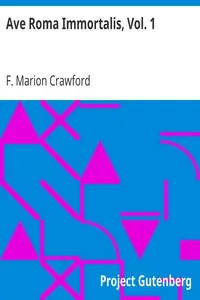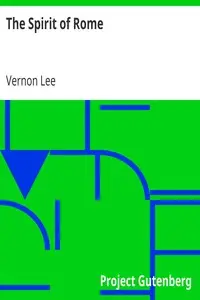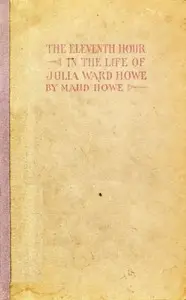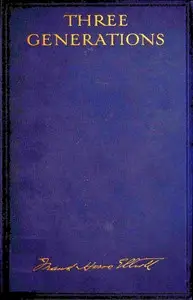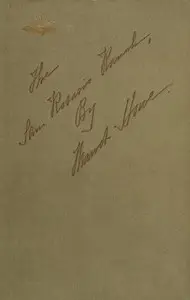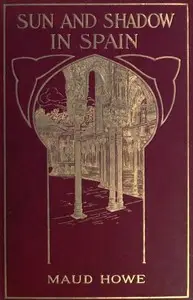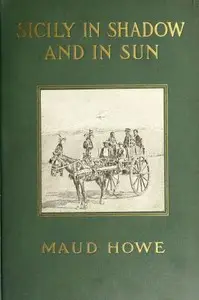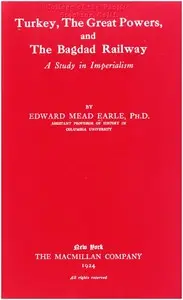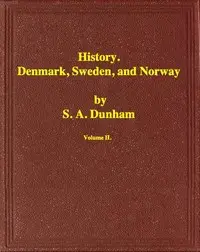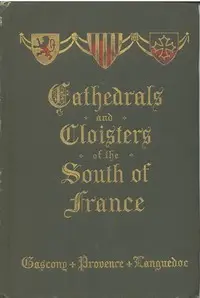"Roma Beata; Letters from the Eternal City" by Maud Howe Elliott is a collection of personal letters offering a glimpse into the author's experiences living in Rome during the late 1800s. Readers can expect to discover the charm and challenges of daily life in the Eternal City, as the author recounts her arrival in Rome, the search for a home, and her funny encounters with their Italian landlady. Through her eyes, readers experience the vibrant markets, savor the unique flavors of Roman cuisine, and navigate the complexities of managing household life with a blend of humor and delight, set against the backdrop of a city brimming with history.
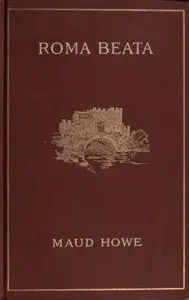
Roma beata; letters from the Eternal city
By Maud Howe Elliott
Experience the sights, sounds, and tastes of 19th-century Rome through the eyes of an expatriate as she navigates the beautiful chaos of the Eternal City.
Summary
About the AuthorMaud Howe Elliott was an American novelist, most notable for her Pulitzer prize-winning collaboration with her sisters, Laura E. Richards and Florence Hall, on their mother's biography The Life of Julia Ward Howe (1916). Her other works included A Newport Aquarelle (1883); Phillida (1891); Kasper Craig (1892); Mammon, later published as Honor: A Novel (1893); Roma Beata, Letters from the Eternal City (1903); Sun and Shadow in Spain (1908) ;The Eleventh Hour in the Life of Julia Ward Howe (1911); Three Generations (1923); Lord Byron's Helmet (1927); John Elliott, The Story of an Artist (1930); My Cousin, F. Marion Crawford (1934); and This Was My Newport (1944).
Maud Howe Elliott was an American novelist, most notable for her Pulitzer prize-winning collaboration with her sisters, Laura E. Richards and Florence Hall, on their mother's biography The Life of Julia Ward Howe (1916). Her other works included A Newport Aquarelle (1883); Phillida (1891); Kasper Craig (1892); Mammon, later published as Honor: A Novel (1893); Roma Beata, Letters from the Eternal City (1903); Sun and Shadow in Spain (1908) ;The Eleventh Hour in the Life of Julia Ward Howe (1911); Three Generations (1923); Lord Byron's Helmet (1927); John Elliott, The Story of an Artist (1930); My Cousin, F. Marion Crawford (1934); and This Was My Newport (1944).

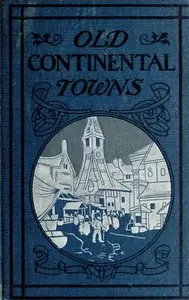
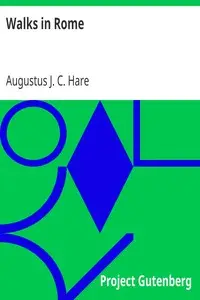
![Letters of an Architect, From France, Italy, and Greece. Volume 2 [of 2] by Joseph Woods](https://cdn.a2-host.cloud/fvx7hIphNHCJl3lXEAadOFaZ2SAmNAteVwQX-6BNv64/rs:fill:215:325:0/g:ce/aHR0cHM6Ly9zcC1hc3NldHMuczMudXMtd2VzdC0wMDQuYmFja2JsYXplYjIuY29tL2Jvb2svNjQyNzIvTGV0dGVyc19vZl9hbl9BcmNoaXRlY3RfRnJvbV9GcmFuY2VfSXRhbHlfYW5kX0dyZWVjZV9Wb2x1bWVfMl9vZl8yX2NvdmVyLmpwZw.webp)
